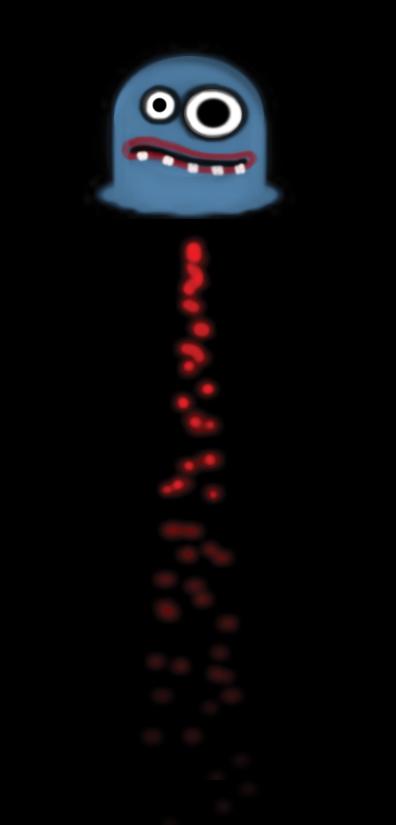Anger Management
Scientists probe wrath’s nature in the hope of devising cures
- 12 minute read
- Feature

When Emotional Brakes Fail
Depression and anger often go hand in hand
Flares and flashes. Outbursts and eruptions. The words used to describe anger tend to be volcanic. And science may explain why.
When an angry feeling coincides with aggressive or hostile behavior, it also activates the amygdala, an almond–shaped part of the brain associated with emotions, particularly fear, anxiety, and anger.
This finding is one in a series from studies led by Darin Dougherty, an HMS associate professor of psychiatry at Massachusetts General Hospital, that aim to uncover why anger attacks occur in patients with major depressive disorder. Some of these patients experience angry flare–ups that are inappropriate to the situation and out of character for the individual. “People will yell or throw things,” says Dougherty. “We wanted to investigate the mechanisms behind those reactions.”
For these patients, angry outbursts usually stop when the depression ends. Understanding this link could provide valuable insights into these disorders and their treatment.
Dougherty began in 1999 by investigating healthy people with no signs of depression and no history of angry episodes. He employed positron emission tomography imaging to examine which regions of the brain engage during angry moments. Subjects simulated angry moments by recalling the moments in their lives when they felt rage. “You can try to spark anger by showing upsetting pictures, for example,” says Dougherty. “But the response isn’t as robust. The best way to induce emotion is through autobiographical scripts.”
During angry recollections, the amygdala fired. At the same time, a part of the orbital frontal cortex, just above the eyes, also engaged, putting the brakes on emotion. “Healthy people experience anger,” says Dougherty, “but they can suppress it before acting on it.”
In depressed people who are prone to anger attacks, this neurological brake fails to engage. In another study, Dougherty found that in people with major depressive disorder and anger attacks the orbital frontal cortex did not activate. Rather, activity in the amygdala increased and angry outbursts ensued. More recently, Dougherty used functional magnetic resonance imaging to achieve a more fine–grained examination of the timing of the amygdala’s activation during angry moments.
Now Dougherty is applying these research techniques to examine what happens in the brain during treatment for anger and depression using drugs or cognitive behavioral therapy to better understand how treatments work mechanistically. Ultimately he hopes this work will give clinicians better insights into which treatment options might be best for patients.
Sticks and Stones
Verbal abuse injures young brains
Everyone feels anger. Traffic snarls, unsympathetic colleagues, playground bullies; we all have our triggers. The problems start when anger boils over into hostility and aggression, behaviors that cause harm.

According to research from McLean Hospital, seemingly harmless anger may cause invisible damage to the brains of young children. Martin Teicher, an HMS associate professor of psychiatry at McLean, has found that verbal abuse from parents and peers causes changes in developing brains tantamount to scarring that lasts into adulthood.
Teicher began his investigations by examining the effects of sexual abuse, physical abuse, and harsh corporeal punishment on young brains. In 2005, he turned his attention to parental verbal abuse, finding that verbal abuse had deleterious effects on par with witnessing domestic violence and other seemingly more violent forms of maltreatment. In 2009 he used diffusion–tensor magnetic resonance imaging to build an accurate map of the neural connections in the white matter of brains of adults who had experienced parental verbal abuse, but no other forms of abuse, as children.
He found three neural pathways that were disturbed in these adults: the arcuate fasciculus, involved in language processing; part of the cingulum bundle, altered in patients with post–traumatic stress disorder and associated with depression and dissociation; and part of the fornix, linked to anxiety. “The damage,” Teicher says, “was on par with that found in the brains of people who had experienced nonfamilial sexual abuse.”
More recently, Teicher found that peer verbal abuse—whether teasing, belittling, or disparaging words—can cause similar damage. “Kids often hear many negative things from their peers,” he says.
Teicher’s latest research suggests that parental and peer verbal abuse may affect children differently throughout development. When experienced during early childhood, verbal abuse can lead to somatization, the translation of emotions into physical illness. During middle school, it can increase the likelihood of drug abuse, anxiety, and depression. In high school, it can lead to increased anger and hostility.
“The expression of a lot of anger can be pathogenic,” Teicher says. “Children especially suffer when anger is vented. Openly expressed negative, raw, and intense emotion is hard for many people to witness and can leave scars.” That is, children’s brains seem to turn down the volume on abusive words, images, and even pain. The result is diminished integrity in these sensory pathways.
Teicher is now investigating the effects of witnessing domestic violence. Early findings suggest that all sensory systems may be vulnerable to violence; abuse that is heard may damage regions distinct from those injured by abuse that is seen or felt. His work as a whole suggests that anger may deserve more attention from psychiatry.
“We’ve really focused on depression and anxiety as key emotions,” he says. “But anger is a big problem. It’s a problem when we express it too much and when we express it too little.”
The Sound of the Fury
Turn off your phones. And televisions. And game consoles…
Everyone, from children to great–grandparents, uses electronic media, and media use will only grow more pervasive. At least, that’s how Michael Rich ’91, an HMS associate professor of pediatrics at Children’s Hospital Boston, sees it.
Yet since the earliest days of television, electronic media has been a blame–taker. In the fifties, people worried that television would turn children into delinquents. Today, parents fear that violent movie scenes and game scenarios will breed anger, aggression, and violence. These accusations against media, Rich believes, come down to values–based arguments, not scientific evidence.

In the fifties, people worried that television would turn children into delinquents. Today, parents fear that violent movie scenes and game scenarios will breed anger, aggression, and violence.
In an effort to drill down to media’s true effects, Rich has launched a longitudinal survey study. “We’re trying to create the media exposure equivalent of the Framingham Heart Study,” he says. The pilot study, now in its third wave of data collection, involves an ethnically and socioeconomically diverse group of 126 middle–school students from Manchester, New Hampshire.
Rich began the investigation with computer–based self–interviews to understand each child’s typical media use, health behaviors and health status. For one week, participants carry a Palm Pilot and video camcorder, soon to be replaced by a smartphone, which they are randomly signaled to use during waking hours to capture their locations, companionship, media use, focus of attention, and emotional state. After completing the 58–question form—which, given the media adeptness of the young participants, usually takes less than 90 seconds—participants make a quick 360–degree video of their environment. This video picks up environmental contexts, including media that go unnoticed by participants, such as loud music in the next room, a brother playing a video game in the same room, or even a billboard passing by outside a school bus.
An early result of the study is the research team’s definition of an important new measure: the Media Involvement Index, a measure of overall media immersion. The team’s hypothesis is that as children use media devices more frequently and concurrently, the children are more likely to show risks of adverse outcomes. The first findings, published in the February 2011 issue of the Journal of Adolescent Health, suggest that children with a higher Media Involvement Index have an increased risk of early alcohol use. Future results will explore how media involvement influences other adolescent health risk behaviors, from smoking to violence.
Rich aims to better understand the ways media affect people’s health and intends to share this information through his online parenting column, Ask the Mediatrician. “In a way, urging responsible media consumption is like promoting food safety and traffic safety,” he says. “You don’t want to lecture people, but to give them facts so they can make informed decisions.”
Alien Therapy
A video game trains angry children to keep their cool
Peew! Peew peew! Missed that alien! Peew! Peew! Oh, no! Just shot a good guy. Peew! Peew peew!
Welcome to RAGE Control (Regulate and Gain Emotional Control), a shoot–’em–up video game designed, as its name suggests, to teach anger management. This counterintuitive game—the kind often blamed for reinforcing behaviors that celebrate anger—works. The key element? When players’ heart rates rise, indicating the emotional arousal that can lead to anger, their guns start shooting blanks. For adolescents who respond to minor stresses with angry and dangerous outbursts, the game may be an alternative to pharmaceutical interventions such as antipsychotics. In addition, says Joseph Gonzalez–Heydrich, an HMS assistant professor of psychiatry at Children’s Hospital Boston and leader of the RAGE Control project, the game may enhance the effectiveness of behavioral therapy.

Unlike traditional biofeedback training, in which people learn to calm themselves by disengaging from reality, RAGE Control requires players to stay internally calm during an intense and frustrating activity. In this game, players must destroy googly–eyed aliens falling down the screen without harming the affable snails that squish past.
“We knew this type of game would force the kids to make decisions constantly while still keeping their arousal in check,” says Jason Kahn, an HMS instructor in psychiatry who built and helped design the prototype. “Plus it would be something they would want to play.” The game, modeled after Space Invaders, targets children aged eight and up.
The researchers combine game play with behavioral therapy that teaches such anger management techniques as deep breathing. The game also serves as an icebreaker for therapists. “The game provides patients with an opportunity to talk about their actions and feelings in the context of the game rather than having to revisit uncomfortable, demeaning topics such as past bad behavior,” says Peter Ducharme, a clinical social worker at Children’s Hospital Boston who is involved in the project. “Practicing the game lets them experience mastering the skills presented in therapy. This in turn allows them to open up about their difficulties.”
During the early stage of testing the game, the researchers recruited children who were inpatients in a psychiatric unit. “The alternative treatment for these kids would be antipsychotic drugs, which have a host of side effects and don’t get at the root of the problem,” says Gonzalez–Heydrich. “You don’t learn to control your aggression by taking antipsychotics.”
A recent trial of the game compared patients receiving the normal course of treatment with those receiving psychotherapy coupled with game play. Gonzalez–Heydrich cautions that the study was small, and that a larger, randomized controlled trial has started. At the same time, he says, “The game intervention had a profound effect. The kids reported feeling less angry.”
Them’s Fightin’ Words
Serotonin and dopamine drive aggression in fruit flies
Raised in isolation, he had no role models. He had never even witnessed a fight. Yet when he stepped into the ring, he had all the moves. He postured, lunged, and boxed, dancing like Muhammad Ali and jabbing like Sugar Ray.
How did he feel when he faced his first foe? Angry? Frightened? It is a question for the ages, for our victorious pugilist is a fruit fly.
“We don’t know when flies are angry,” says Edward Kravitz, the George Packer Berry Professor of Neurobiology at HMS, who studies fruit–fly aggression. “We can’t ask the animals how they feel.”

What Kravitz can ask, however, is what drives this innate aggressive behavior. Such research, although it does not translate directly to human anger, can provide insights into hostility and bullying. Kravitz saw similar unlearned, unpracticed fighting instincts in lobsters, making the question about hardwired anger even more curious. He selected flies as a model for teasing out the genetics, though, because flies can be bred rapidly and raised in complete isolation.
Kravitz has found that flies show aggressive behaviors when they face competition for resources, such as food or a mate. At first, they all fight the same way, but over time, winners and losers emerge. “Losing flies develop a loser mentality,” says Kravitz. They fight less aggressively against opponents they’ve lost to before and, even though they approach new foes with gusto, they tend to keep losing.
Even bullies, the victors who keep picking fights and winning, will lose their competitive advantage after just one loss.
In recent work, Kravitz bred flies with “tunable” aggression. In these transgenic flies he can selectively turn on and off neurons that contain serotonin and dopamine to determine what roles these neurons play in aggression, fight intensity, and the creation of pecking orders.
Serotonin, he found, is crucial for fight intensity. Without it, flies will not do battle with gusto. Dopamine appears to inhibit aggression: In its absence, flies fight at higher intensity levels. Kravitz and colleagues plan to isolate the specific neurons involved and work out the circuitry that governs these behaviors.
While it’s tempting to relate such findings to humans and their mood disorders, Kravitz avoids such equations. “We are after general principles of how these neural circuits work, and some of the chemicals are the same across species,” he says. “But the details of the circuitry are going to be completely different.”
Elizabeth Dougherty, a former science writer at HMS, is now a freelance science writer and novelist living in central Massachusetts.
Images: Joson/Getty Images (top); Rose Lincoln/Harvard News Office (M.Teicher); Erik Dungan/Stock.Xchng; Courtesy of Michael Rich (M.Rich); Courtesy of Joseph Gonzalez–Heydrich (Cartoon); Arlindo71/istockphoto.com (fly)